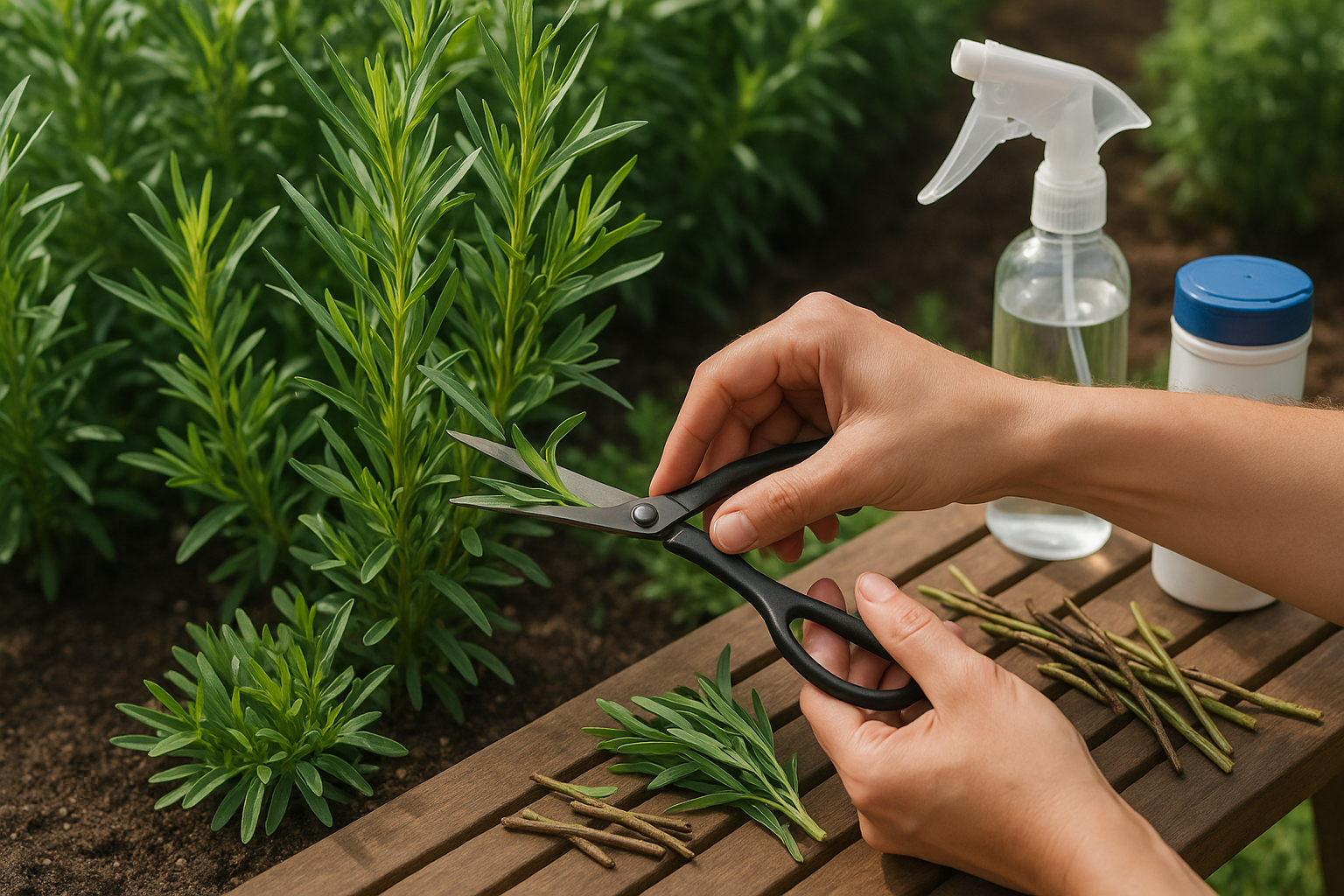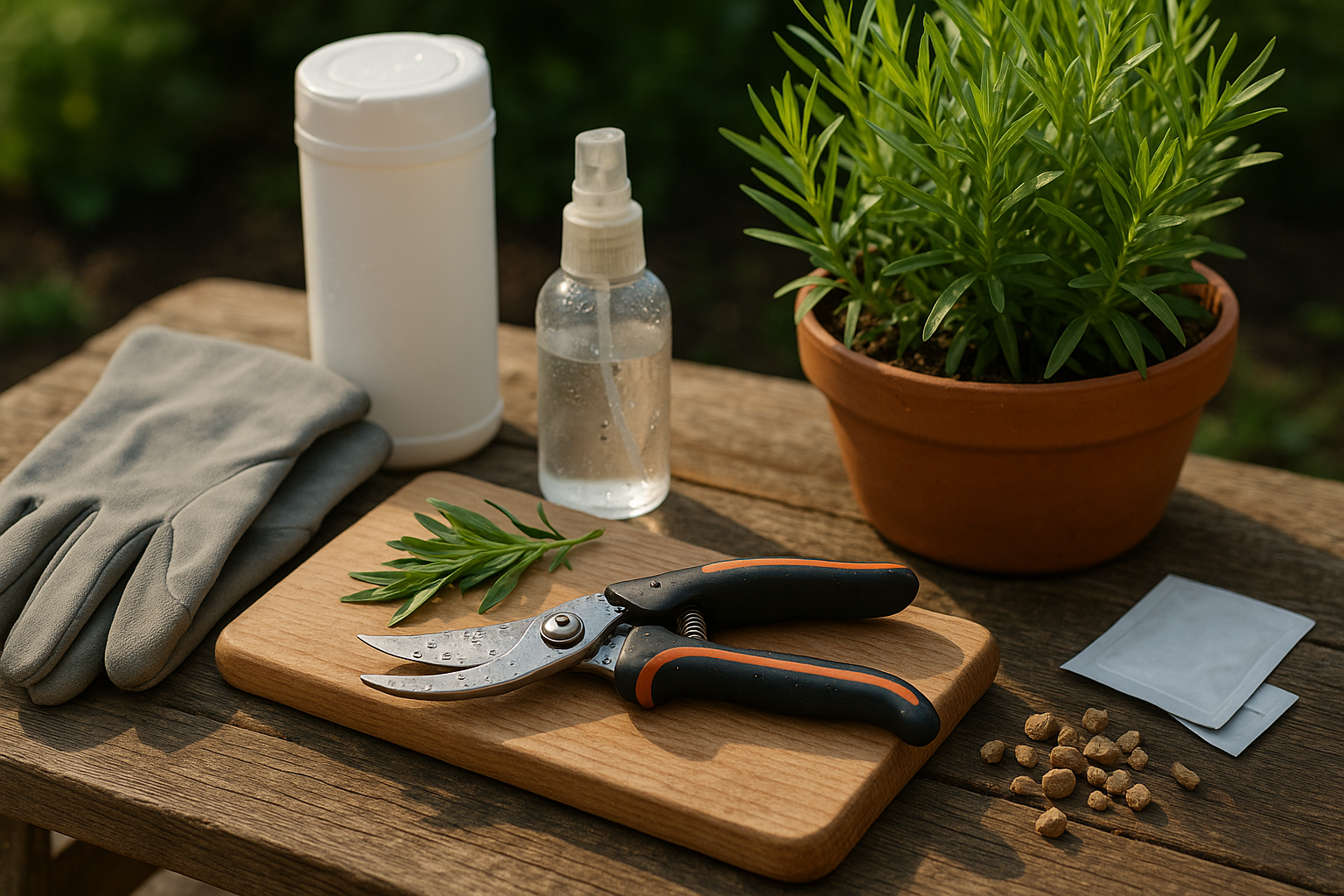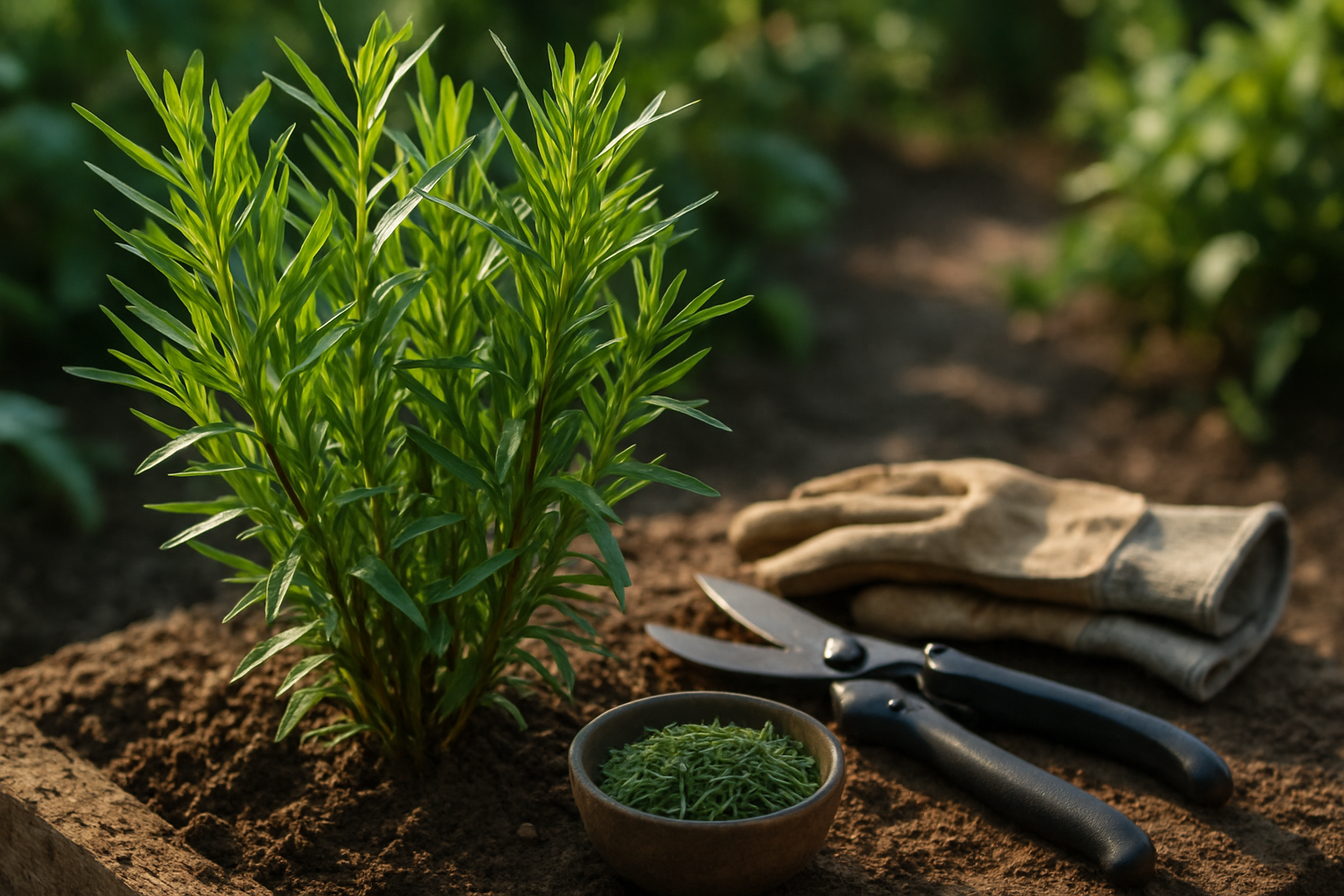Why Prune Tarragon?

Pruning tarragon isn’t just about keeping your herb garden tidy—it’s essential for the plant’s health and the flavor of your harvest. Regularly trimming tarragon encourages new, tender shoots, which are tastier and more aromatic than older, tougher growth.
If left unpruned, tarragon can develop woody stems that drain the plant’s energy and reduce overall yield, leaving you with fewer leaves to enjoy. Pruning also helps prevent overcrowding, allowing light and air to reach all parts of the plant, which in turn wards off fungal diseases and pests.
Another benefit of trimming tarragon is that it stimulates more vigorous growth, meaning you’ll be able to harvest fresh sprigs more often throughout the growing season. The flavors in tarragon’s leaves concentrate when the plant is kept actively growing and not allowed to flower or bolt, so snipping off flower buds as they appear keeps the taste at its peak.
However, timing and technique matter—a heavy cut at the wrong time can shock the plant and stunt regrowth. For best results, use sharp scissors or shears to prune tarragon in the morning, taking no more than a third of the growth at a time. Focus on promoting healthy, bushy development rather than just trimming for shape.
When to Prune Tarragon
The best times to prune tarragon are early in spring, again in mid-summer, and once more after the flowering period ends. In spring, as new shoots appear, trim back any dead or weak stems to encourage strong, bushy growth.
If you notice your tarragon looking leggy, with long, thin stems and sparse leaves, that’s a clear sign it needs a trim—this keeps the plant compact and healthy. Mid-summer is another excellent opportunity to shape your tarragon, especially if flower buds start forming. Regular harvesting or pruning before flowering helps preserve the strongest flavor.
Overcrowded clumps or tangled stems also indicate it’s time for a cut, so the plant can breathe and regrow vigorously.
French tarragon, prized for culinary use, should be pruned a bit more delicately as it’s less robust than Russian tarragon, which can handle more frequent, heavier trims.
Be careful not to prune too early in spring when frost is still possible, as tender new growth can be easily damaged. Avoid pruning too late in the season, since harsh cuts after late summer may weaken the plant and reduce winter hardiness.
By timing your pruning right, you’ll enjoy healthier, more flavorful tarragon all season long.
Tools and Preparation for Pruning

Getting ready for pruning starts with gathering the right tools: a pair of sharp pruning shears or scissors for clean cuts, sturdy gloves to protect your hands from thorns and sap, and disinfectant wipes or a household cleaner like rubbing alcohol. Before you begin, always sterilize your tools by wiping the blades with alcohol—this simple step helps prevent the spread of diseases from plant to plant.
It’s also wise to wash your gloves regularly, especially after dealing with sick or infested plants. Prep your plant by watering it the day before; hydrated branches snap back better and are less likely to suffer stress.
Take a moment to inspect the plant for pests, eggs, or signs of disease, like spots or odd growths. If you spot trouble, treat those issues first before pruning, so you don’t accidentally spread them through the garden. This thoughtful prep sets you up for success and healthier plants.
How to Prune Tarragon
When pruning tarragon, focus on making clean cuts just above the leaf nodes—those small bumps where new leaves or stems grow—on healthy, green stems. This encourages your tarragon to branch out and become fuller.
For routine maintenance pruning, trim back no more than one-third of the plant at a time. Use sharp scissors or pruning shears, and always cut just above a strong leaf node to stimulate bushier growth.
If your tarragon is getting too leggy or crowded, shape it by trimming the outer stems slightly shorter than the central ones. This promotes a more rounded, lush look.
For optimal harvesting, prioritize cutting the freshest stems above the leaf nodes and avoid removing all growth from any single section. Be sure to remove any yellowing, woody, or crossing stems to keep air flowing and prevent disease.
Don’t cut down to the woody base or remove more than a third at once, as this can stress the plant.
Rejuvenation Pruning
Unlike routine maintenance, rejuvenation pruning is more drastic and is usually done in early spring. Cut the stems back to about 6 inches above the soil—this resets a neglected or woody plant but should only be done when necessary.
Always dispose of diseased stems and never compost them.
With these steps, your tarragon will stay healthy, bushy, and ready to flavor your kitchen creations.
Combining Pruning with Harvesting
Combining pruning with leaf harvesting is a practical way to keep your tarragon healthy while enjoying a fresh supply for your kitchen. Instead of snipping leaves randomly, try cutting back stems selectively, focusing on removing older, outer growth while leaving the younger shoots in the center.
Use sharp, clean scissors or pruners to avoid crushing stems, and always cut just above a leaf node to encourage bushier regrowth. When harvesting, pick only a few leaves from each stem at a time—never strip a plant bare, as this can weaken it.
Routine harvesting every couple of weeks stimulates the plant to produce fresh shoots, keeping growth vigorous and preventing it from becoming leggy or woody. If you’re planning to store or dry tarragon, wait until late spring or early summer for heavy pruning, when the plant is at its leafy peak.
Cut back up to one-third of the plant at once; this allows you to collect a bulk harvest without stressing the plant, which will bounce back quickly with good watering and sunlight. Combining these steps helps ensure you always have lush, productive tarragon ready for both fresh use and future storage.
Troubleshooting & Aftercare
After pruning, it’s normal to notice signs like wilting leaves, slow regrowth, or even a sudden appearance of pests. If your plant looks droopy, check the soil: underwatering can stunt recovery, so keep the soil moist but not soggy for a few weeks after cutting.
Mulch around the base to retain moisture and regulate temperature, but keep it away from the stem to prevent rot. A gentle feed with diluted liquid fertilizer can also kickstart new growth.
Watch for pests or fungal spots, as increased vulnerability often follows pruning stress. Remove any infected leaves and use an organic treatment if needed.
If your plant seems stuck, check for changes in sun exposure or root damage—sometimes shifting the pot or lightly loosening compacted soil helps.
Yellowing or limp leaves often signal stress, so cut back on further pruning and give the plant time to recover. Regular check-ins ensure a healthy, vibrant rebound.
Pruning False Tarragon and Other Varieties
French tarragon is prized for its sweet, anise-like flavor but tends to have delicate, slow-growing stems, while Russian tarragon is hardier and taller, though less flavorful. False tarragon (Mexican tarragon) isn’t a true tarragon, but it truly shines in hot climates and has a strong, licorice taste.
Proper pruning is crucial for all varieties, but less common types like false tarragon grow more vigorously and tolerate a harder trim. In contrast, French tarragon is sensitive—only remove the top inch or two of growth during late spring or early summer to encourage bushiness without stressing the plant.
For Russian tarragon, you can be a bit more liberal, but never cut more than one-third of the plant at any one time. Always use sharp, clean scissors and avoid pruning during extreme heat or when the soil is dry. Regular but gentle snipping helps all tarragon types thrive without risking shock.
